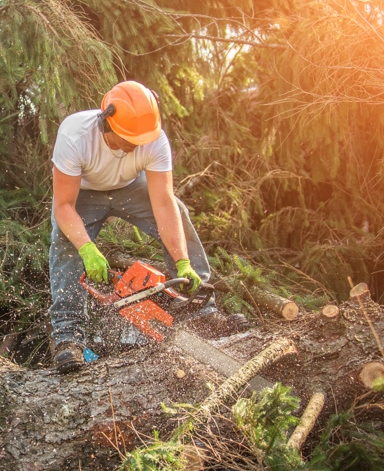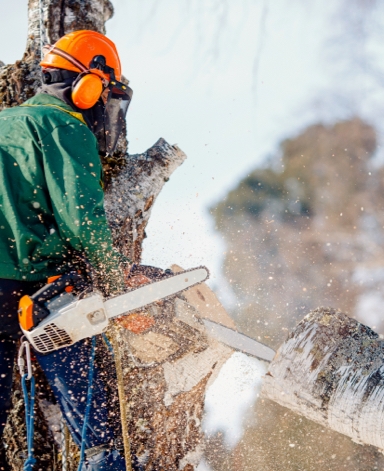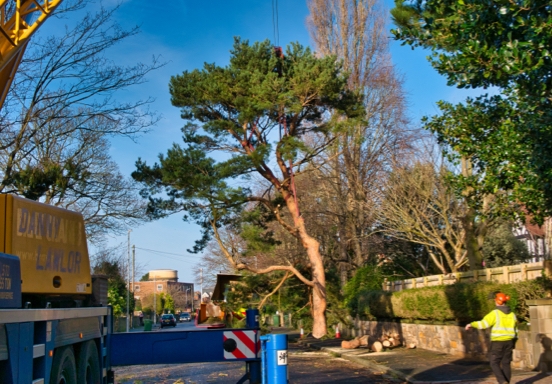WHAT IS SITE CLEARANCE
Site clearance is the process of removing vegetation, debris, and other obstructions from a designated area. Whether you’re preparing land for a new construction project or agricultural purposes, this essential service ensures a safe, level ground that meets environmental regulations.
Why is Site Clearance Important?
Site clearance is essential for several reasons. Firstly, it creates a level and safe ground that is free of any vegetation, debris, or other obstructions. This level ground makes it easier to lay foundations for buildings, roads, or other structures. Secondly, site clearance ensures that the land is ready for cultivation, providing an ideal environment for agriculture. Finally, site clearance also ensures that the land is safe and free of hazards, such as trees that may fall and cause damage or injury.
What are the Methods of Site Clearance?
There are several methods of site clearance, and the choice of method depends on the nature and size of the area to be cleared. The methods include:
-
Manual Clearance - This is the most common method, and it involves the use of hand tools such as machetes, axes, and chainsaws to cut down trees, bushes, and other vegetation. Manual clearance is ideal for small areas or areas with limited access.
-
Mechanical Clearance - This method involves the use of heavy equipment such as bulldozers, excavators, and mulchers to clear the land. Mechanical clearance is ideal for large areas and areas with tough terrain.
-
Chemical Clearance - This method involves the use of chemicals to kill trees and other vegetation. It is often used in conjunction with manual or mechanical clearance to control regrowth.
-
Controlled Burning - This method involves the controlled burning of vegetation to clear the land. Controlled burning is ideal for areas with high fire risk, and it is often used in conjunction with manual or mechanical clearance.
What Equipment is Needed for Site Clearance?
The equipment needed for site clearance depends on the method chosen. For manual clearance, hand tools such as machetes, axes, and chainsaws are needed. For mechanical clearance, heavy equipment such as bulldozers, excavators, and mulchers are required. For chemical clearance, herbicides and other chemicals are needed. For controlled burning, fire safety equipment such as hoses, fire extinguishers, and water tanks are necessary.
Regulations Governing Site Clearance
In the UK, site clearance is regulated by several laws and regulations. These include the Town and Country Planning Act, the Wildlife and Countryside Act, and the Environmental Protection Act. These laws aim to protect the environment and ensure that site clearance is carried out in a responsible and sustainable manner.
Before carrying out site clearance, it is important to obtain the necessary permits and approvals from the relevant authorities. This includes obtaining planning permission from the local council and complying with any conditions set out in the permission.
We have over 15 years experience with site clearance works. We have all the machinery and the manpower required to provide an effective, efficient service, whatever the job.


CONTACT US FOR EXPERT SITE CLEARANCES SERVICES
Get in TouchContact us today to talk
through your requirements
SITE CLEARANCE
FAQS
What factors influence the cost of site clearance?
The cost of site clearance depends on several factors, including the size of the area to be cleared, the type of vegetation to be removed, the method used for clearance, and any additional services required, such as waste disposal or environmental impact assessments. Other factors that can influence the cost include the location of the site and the accessibility of the area. It is important to obtain quotes from several site clearance companies and to compare prices and services before making a decision.
What are the environmental considerations for site clearance?
ite clearance can have significant environmental impacts, and it is important to consider these impacts before carrying out any clearance activities. Some of the key environmental considerations for site clearance include:
-
Habitat destruction: Site clearance can destroy habitats for wildlife, including birds, mammals, and insects. It is important to consider the potential impacts on local ecosystems and to implement measures to mitigate any negative effects.
-
Soil erosion: Site clearance can increase the risk of soil erosion, particularly on steep slopes. This can lead to sedimentation in nearby waterways, which can have negative impacts on water quality.
-
Air pollution: Site clearance activities can generate dust and other airborne particles, which can impact air quality in nearby areas. It is important to take measures to minimize air pollution, such as using water to suppress dust.
-
Water pollution: Site clearance can increase the risk of water pollution by introducing sediment and other pollutants into nearby waterways. It is important to implement erosion control measures and to ensure that any waste is disposed of properly.
What are the benefits of site clearance?
-
Safety: Site clearance removes any potential hazards, such as trees that could fall and cause injury or damage.
-
Accessibility: Site clearance provides a level and accessible ground that is free of obstructions, making it easier to navigate and work on.
-
Aesthetics: Site clearance can improve the appearance of the land, making it more attractive for development or other uses.
-
Improved land quality: Site clearance can provide better soil quality for cultivation or other agricultural purposes.
-
Increased property value: Site clearance can increase the value of a property by making it more attractive and accessible for development.
